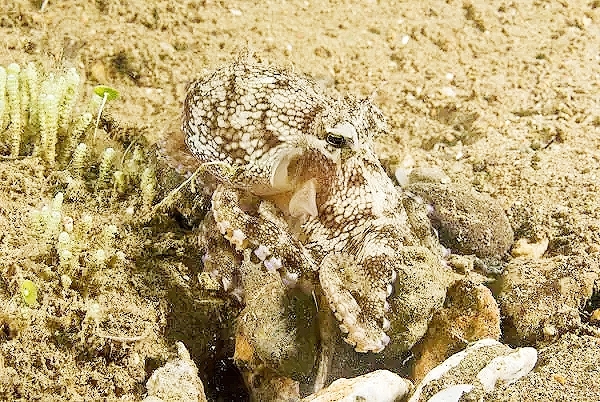|
Marbled octopus (Amphioctopus aegina)
| 제목: | Marbled octopus (Amphioctopus aegina)
| | 올린이: | Shahril (different_world_06@hotmail.com)
| |

| 해상도: 600x402
파일크기: 291244 Bytes
촬영일: 2022:11:16 00:27:55
등록시간: 2022:11:16 10:45:39
|
This species can be found down to a depth of at least 40m. The nocturnal hunter feeds on crustaceans and shells. Octopuses have a large brain and are regarded as the most highly developed invertebrates. |
^o^
동물그림창고 똑똑전화 누리집
^o^
|
|